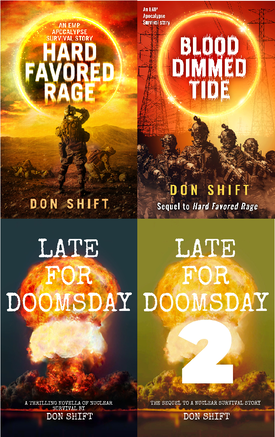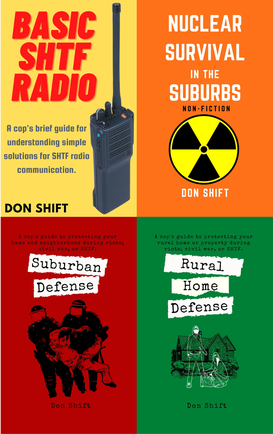|
Select titles now available as audiobooks through Audible.com and Amazon, provided by new virtual voice narration.
|
Non-Fiction
Suburban Defense: A cop's guide to protecting your home and neighborhood during riots, civil war, or SHTF.
Book 1 in the Suburban Survival Series

This book is how average people, with no military or law enforcement skills, who haven’t been steeping themselves in the prepper/patriot movement for years can defend a modern American suburban neighborhood. Military and police tactics have been adapted for realistic scenarios that civilians might face. If you want to stay safe and protect yourself and your neighborhood from people seemingly bent on destroying the country for destruction’s sake, this is your guide. Maintenant disponible à la vente en français!
Suburban Warfare: A cop's guide to surviving a civil war, SHTF, or modern urban combat.
Book 2 in the Suburban Survival Series
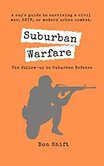
This book is the perfect follow-up companion to Suburban Defense: A cop's guide to protecting your home and neighborhood during riots, civil war, or SHTF. Some of the topics examined are:
—How defenders can use and defeat drones,
—Urban fighting in modern American terrain, and
—Vehicular gunfights. Maintenant disponible à la vente en français!
—How defenders can use and defeat drones,
—Urban fighting in modern American terrain, and
—Vehicular gunfights. Maintenant disponible à la vente en français!
Rural Home Defense: A cop's guide to protecting your rural home or property during riots, civil war, or SHTF.
Book 3 in the Suburban Survival Series

Rural Home Defense is the rural companion to Suburban Defense and Suburban Warfare. This book is for:
Farmers who are going to be facing intimidation from organized crime.
Isolated rural homeowners.
Country neighborhoods that need to band together against marauders.
Keeping remote homes and retreats in the hands of their owners.
Farmers who are going to be facing intimidation from organized crime.
Isolated rural homeowners.
Country neighborhoods that need to band together against marauders.
Keeping remote homes and retreats in the hands of their owners.
Poor Man's Air Force
A guide to how small drones might be used in domestic unrest or low intensity conflicts

Drones, or unmanned aerial vehicles (UAVs), are changing the tactical landscape of warfare. The use of drones in conflicts has the potential to alter centuries of ground warfare in the same way as disruptive technologies like smokeless powder, the repeating firearm, tanks, and radios did in the past. Not just a rhetorical discussion of drone warfare, this book looks at practical usage by the prepared citizen, partisan, and soldier. (Buyers do not need to purchase the SHTF Tactical Drone Manual).
SHTF Tactical Drone Manual
A prepared citizen’s guide to using drones for defensive purposes.

A stripped-down version of Poor Man's Air Force suitable for field use that covers how to use, and defend against, small drones in real-world situations. This book focuses on techniques for deploying, operating, and maintaining drones for prepared citizens who wish to leverage this emergency technology. All non-essential information such has been removed to create the ultimate guide to operating drones for survival. This practical manual is not specific to certain models, but discusses common methods and procedures applicable to all small unmanned aerial systems (sUAS).
Nuclear Survival in the Suburbs: Non-fiction
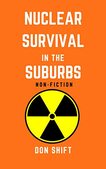
"How do I survive a nuclear war? I live in a wood frame tract house!" you may be thinking. It IS possible to survive nuclear war without an underground shelter. You don't have to despair if the global instability on the world stage comes to that. If the radiation level is low enough, even sheltering in the center of a joisted masonry or wood framed slab on grade house can be effective. Learn practical nuclear survival tips and the realities of a nuclear war the other books leave out. Survive it!
Basic SHTF Radio: A cop's brief guide for understanding simple solutions for SHTF radio communication.

Do you want a two-way radio to communicate during emergencies, disasters, or the end of the world? Is the information online or on YouTube just too confusing to get a good understanding of what your options are? If so, this book is for you! Don't let the test of ham radio put you off. This is NOT a "how to get your ham license" guide or a technical explanation of radios and radio waves. This is a primer that will explain all the things that the sad hams and YouTube videos can never seem to get around to.
The Surbanite's Quick Guide to Surviving the End of the World: Unconventional and controversial ideas to surviving riots, civil war, and nuclear war.
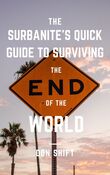
You may find yourself in the middle of a human disaster you may never have anticipated. Cyberattacks may cripple cell phone networks, nuclear war is suddenly a threat again, and civil unrest is simmering just below the surface. You can't plan to survive what you haven't planned for. Every citizen must begin thinking outside the box and for catastrophes not seen by Western society in generations.
Note: portions of this book are excerpted and adapted from the author's other works.
Note: portions of this book are excerpted and adapted from the author's other works.
Fiction
The Dad With a Flamethrower
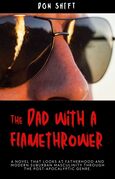
A suburban father is plunged into an icy heart of darkness that threatens his family and everything he holds dear. When a cataclysmic combination of a polar vortex, power grid failure, fuel shortage, and violent pre-election riots converges on his city, Ross’s complacent existence shatters into a deadly struggle for survival.
Limited Exchange: A Story of Two Families Surviving Nuclear War
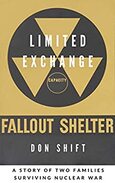
How would you ensure your family survived a modern nuclear war in America? In the late 2020s, two families find themselves caught in the middle of a nuclear war with China, fighting for survival. Carson Akins and his friend Neal Reiter find themselves trapped in unenviable, life-threatening situations while war rages and fallout descends around them.
Late For Doomsday: a thrilling novella of nuclear survival
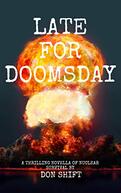
What would you do in a modern-day nuclear crisis? Would you leave behind your job at the risk of being fired if nothing—which you pray for—happens? Twin brothers Sheldon and Ellis are keeping a close eye on the development of a war between China and the United States. When it looks like it is about to go nuclear, they realize how close they are drawing the line between evacuation and sheltering in place. On the eve of the war, one brother is poised to head for their remote desert ranch while the other constructs a hasty shelter for his wife who refuses to leave.
Late For Doomsday 2: The Sequel to a Nuclear Survival Story
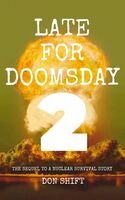
You might survive a nuclear attack, but would you survive the aftermath? Two friends have a choice: stay in the city and take the chance that they are not pummeled by nuclear warheads or take their chances in the Mojave Desert. Only when it is too late do they make the decision to head for the safety of a friendly ranch, the new home of brothers Sheldon and Ellis from the prequel. Meanwhile, desperate Chinese commandos are somewhere roaming the countryside.
Hard Favored Rage: A Cop's EMP Apocalypse Story
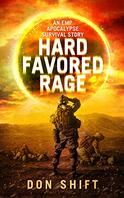
What would life look like after an Electromagnetic Pulse (EMP) robs Southern California of electricity, communications, and utilities while cars are starved of fuel? Ventura County, just north of Los Angeles, planned for a nuclear attack, but not a devastating EMP. In the apocalyptic chaos, can the men and women of the Ventura County Sheriff’s Office keep the threads of society together while everything falls apart, or do they descend into the same brutality as the villains?
Blood Dimmed Tide: A Cop’s EMP Apocalypse Story
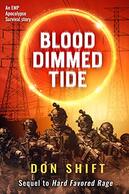
In the follow up to "Hard Favored Rage," a new group of law enforcement officers struggle to survive. Can a group of unprepared cops help a small county just outside of Los Angeles survive the total collapse of society devastated by an Electromagnetic Pulse (EMP)? For millions, their death sentence begins the moment the power goes out and the California Aqueduct runs dry, leaving the crops to wither in the fields and the cities to burn. Mere anarchy has been loosed upon the United States.
What if Santa Were Real?
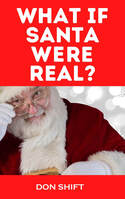
What if Santa Claus were real? It’s a question that many of us have had since we were old enough to know the truth. How would he deliver the presents? What would the theological implications be of Santa? In this novella, a New York Times reporter gets a mysterious invitation to meet Santa at the North Pole. With the help of the United Postal Service, the reporter travels to the remote Alaskan town of Barrow, the northernmost place in the United States. When he arrives at the North Pole, the cynical journalist is confronted with a wonderous world that seems like make believe every December.
Do you only sell on Amazon.com?
Unfortunately, Amazon is the only outlet for my books. At this time, the sales volume is ideal for the print-on-demand and Kindle eBook services that Amazon provides. I know a lot of readers are opposed to supporting the giant monopoly, but please realize for a small author of unconventional and unpopular topics Amazon makes it possible for me to publish when virtually no other publishing house would give me the time of day. Please support my work.
The information herein does not constitute legal advice and should never be used without first consulting with an attorney or other professional experts. No endorsement of any official or agency is implied. If you think this is in any way official VCSO business; you're nuts. The author is providing this content on an “as is” basis and makes no representations or warranties of any kind with respect to this content. The author disclaims all such representations and warranties. In addition, the author assumes no responsibility for errors, inaccuracies, omissions, or any other inconsistencies herein. The content is of an editorial nature and for informational purposes only. Your use of the information is at your own risk. The author hereby disclaims any liability to any party for any loss, damage, or disruption through use of the information. Copyright 2023. As an Amazon Associate I earn from qualifying purchases. Donut icons created by Freepik - Flaticon
